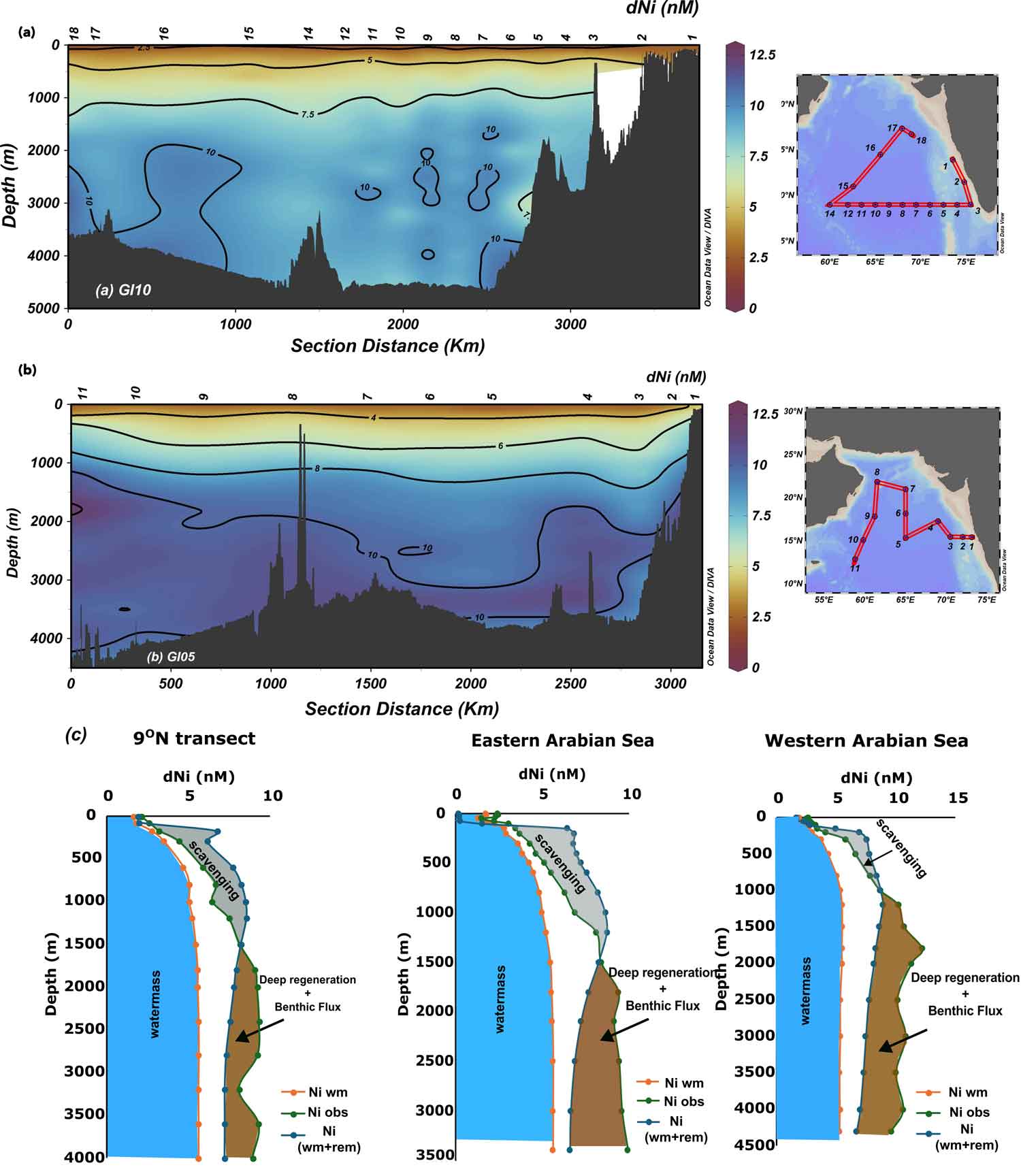Dissolved nickel sources: transformation and sinks in the Arabian Sea
Malla and co-authors (2025, see reference below) present an extensive study of the distribution of dissolved nickel (dNi) in the Arabian Sea. Concentrations range from ∼2 nM at the surface to ∼12 nM in deeper waters, showing a typical nutrient-like profile. Based on their estimates of three major external sources, authors show that atmospheric dust accounts for ~36% of the dNi supply, while riverine input and submarine groundwater discharge (SGD) contribute ~62% and ~2%, respectively.
The vertical distribution of dNi reflects the combined influence of these external inputs, water-mass mixing, biological uptake and remineralization, as well as reversible scavenging. Above 1000 m, scavenging dominates; below 1000 m, regeneration seems to be the main process (see figure).
Last but not least, there are Oxygen Minimum Zones (OMZs) in the Arabian Sea. Interestingly, a significant depletion of dNi over Phosphate in the intense oxygen minimum is observed, implying a complex interplay of factors such as nickel loss as sulphides or iron oxides or particulate organic carbon (POC) and due to varying ecosystem composition.

Reference:
Malla, N., Singh, S. K., Singh, N. D., Shukla, A., Chinni, V., Goswami, V., & John, R. (2025). The Role of Water Masses, Biological Processes, Remineralization and Reversible Scavenging in Controlling the Distribution of Dissolved Nickel in the Arabian Sea. Global Biogeochemical Cycles, 39. Access the paper:10.1029/2024gb008441
